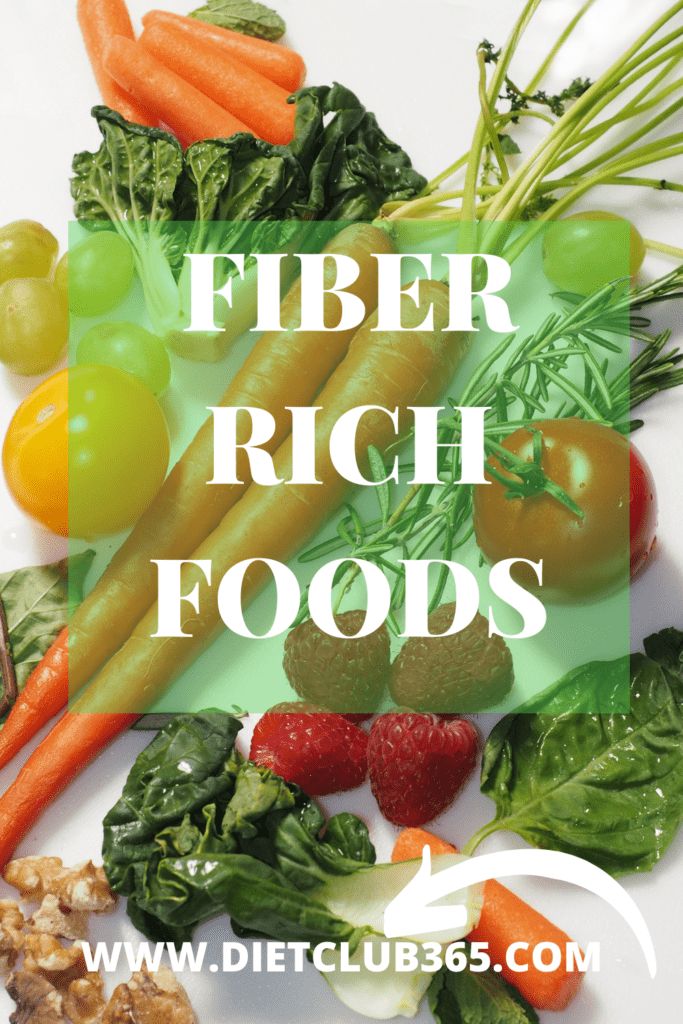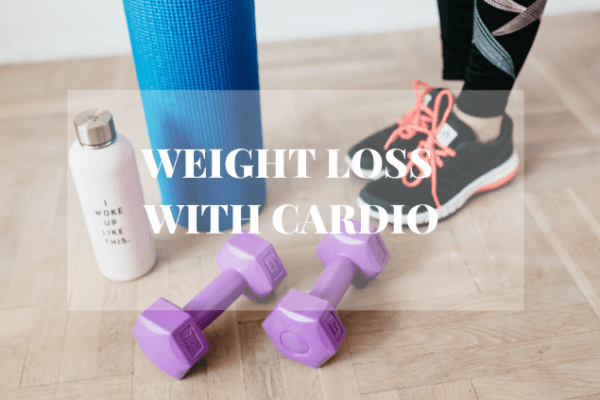Fiber (or dietary fiber) is a plant component that the human stomach cannot digest in most cases. Despite this, fiber plays an important role in the metabolic process. It helps with the maintenance of digestion and regulation of blood sugar and cholesterol levels.
Foods rich in fiber primarily include grains and stems of plants. Additionally, it is abundant in nuts, and various vegetables. Among other things, eating foods that contain fiber is beneficial due to their content of vitamins, minerals and natural antioxidants.

Fiber - what is it?
Fiber is a type of a complex carbohydrate. In fact, it forms the structure of vegetables, and is also the material that makes up the shell in the grains. There is a lot of dietary fiber in bran, cereals, grains, nuts, any vegetables and fruits.
Although fiber is not absorbed by the body, it allows food to move through the intestines and improves intestinal micro-flora. The good thing about fiber foods is their low glycemic index. Thus, consuming them regularly helps maintain stable blood sugar levels.
Soluble fiber, found in fruits and a number of other foods, turns into a gel-like substance in the stomach – serving as food for beneficial bacteria. In turn, coarse insoluble fiber improves digestive mechanics.
Fiber – in short:
- dietary fiber is found in plants
- essential for digestion processes
- acts as a prebiotic

Daily Values
On average, the daily intake of fiber for adults should be 30 g, for children – 20-25 g. Athletes on a muscle gain diet need up to 40 grams of fiber per day (due to the higher calorie intake).
Additionally, when following a diet for weight loss (especially in the case of low-carb and no-carb diets), it is extremely important to ensure that fiber-rich foods are always kept in the diet – otherwise digestive problems may arise.
Fiber-rich foods
The most fiber-rich food product is bran which is the ground shell of a grain. Next on the list are seeds and nuts – the inside is soluble fiber while the outside is insoluble. Also, a lot of dietary fiber is found in all types of legumes, grains and vegetables.
- Bran
Bran is the leader in dietary fiber content. Fiber content can form up to 45% of its weight. Bran is a ground shell of grains of various cereals (wheat, rye, oats and even rice). It is important to remember that as a product of wheat processing, bran usually contains gluten by composition.
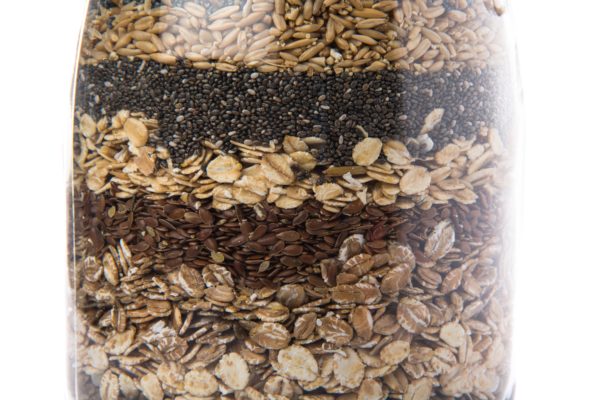

2. Chia seeds
Chia seeds contain soluble fiber, which absorbs liquid like a sponge. Its content makes up more than 30% of chia seed’s mass. Note that flax seeds also have similar health benefits, and they contain up to 25% soluble fiber.
- Cereals
Each of the cereals has its own characteristics. For example, oatmeal contains beta-glucan, which normalizes blood sugar levels and reduces hunger. Bulgur contains the most fiber (almost 20%) and is the healthiest version of wheat.
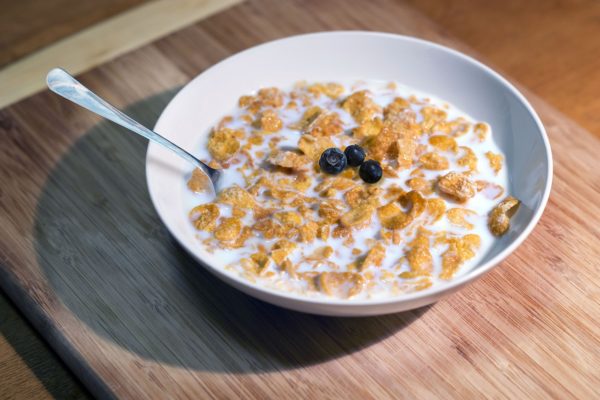
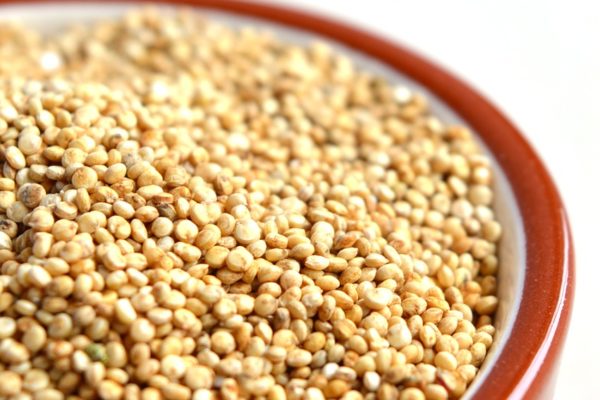
4. Pseudo-grains
Examples of pseudo-grains include buckwheat, quinoa and millet which do not belong to cereals. In fact, they are plant seeds. Usually they contain from 10% to 15% dietary fiber per the weight of dry cereals before cooking. There is even less fiber in porridge.
5. Legumes
An example of healthy legumes are lentils, which contain not only 10% fiber, but also 25% vegetable protein. Among other things, lentils, peas and soybeans are also high in fiber and have a low glycemic index.


6. Dried mushrooms and dried fruits
The high fiber content of dried mushrooms and dried fruits is explained by the mechanics of production. As the water literally dries up, the remainder of the dry weight falls on simple carbohydrates (up to 60-70% by weight) and coarse dietary fiber (from 10 to 12%).
7. Nuts
The rule of thumb is that the fatter the nut, the more fiber it contains. An example is macadamia nut and pistachio – leaders in both calorie content and the amount of plant fiber. It accounts for 10% of the weight. The content is lower in other nuts.

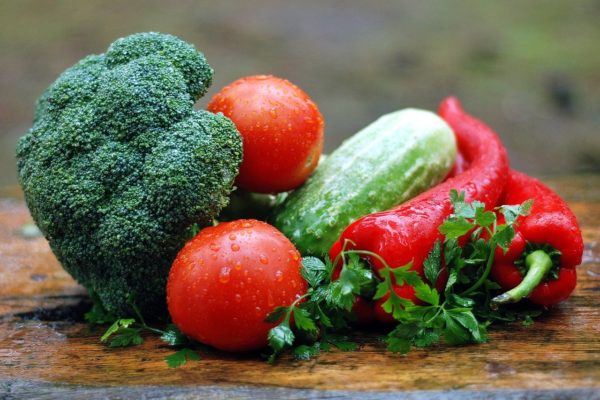
8. Vegetables
Strictly speaking, vegetables do not contain a lot of plant fibers in terms of weight – about 2-5% by weight. However, the average serving of vegetables usually weighs more than the average serving of cereals.
Dietary fiber - functions and benefits
Foods that are high in fiber have a low glycemic index. The presence of insoluble dietary fiber in the stomach makes it difficult for the digestion of carbohydrates, preventing their rapid absorption. Such products provide a long-lasting feeling of fullness.
Dietary fiber physically fills the intestines, causing it to block hunger and send a satiety signal to the brain, which prevents overeating. Ultimately, fiber slows down the absorption of glucose into the bloodstream, positively affecting sugar and insulin levels.
The benefits of fiber:
- regulates blood sugar
- normalizes cholesterol
- improves metabolism
- helps digestion
- provides satiation
Why is lack of fiber dangerous?
The lack of fiber in the consumed foods not only impairs digestion, but also leads to an increase in blood glucose levels, provoking insulin resistance. In addition, the lack of fiber in the diet is associated with the activation of the mechanisms of deposition of bad cholesterol on the walls of blood vessels.
It should be noted that the lack of fiber is primarily a consequence of complex nutritional disorders, characterized by a lack of plant foods. Deficiency of dietary fiber occurs when following a diet rich in meat products and fast carbohydrates (rice, starch).

Fiber content in foods
Food Examples / Fiber per 100 g
Bran 40-45 g
Seeds (including flaxseed and chia seeds) 25-30 g
Dried mushrooms 20-25 g
Dried fruits 12-15 g
Whole grain cereals (oatmeal, buckwheat, quinoa) 10-15 g
Legumes (lentils, beans, chickpeas) 9-13 g
Whole grain bread 8-9 g
Berries (blueberries, lingonberries) 5-8 g
Vegetables 7-10 g
Sweet fruits (peaches, oranges, strawberries) 2-4 g
Carrots 2-3 g
Complete table of foods with fiber, showing the percentage of the recommended daily value:
Food product / Fiber content per 100 g / Percentage of the norm
- Wheat bran / 43.6 g / 145% /
- Dried porcini mushrooms /26.2 g / 87% /
- Dried figs /18.2 g / 61% /
- Dried apricot /18 g / 60% /
- Apricot /17.6 g / 59% /
- Rye (grain) /16.4 g / 55% /
- Oat bran / 15.4 g / 51% /
- Dried peach /14.9 g / 50% /
- Dried apples /14.9 g / 50% /
- Barley (grain) /14.5 g / 48% /
- Buckwheat (grain) /14 g / 47% /
- Soybean (grain) /13.5 g / 45% /
- Rye flour /13.3 g / 44% /
- Peeled rye flour / 12.4 g / 41% /
- Beans / 12.4 g / 41% /
- Lentils / 11.35g / 38% /
- Wheat (grain, hard grade) / 11.3g / 38% /
- Seeded rye flour / 10.8 g / 36% /
- Wheat (grain, soft grade) / 10.8 g / 36% /
- Rosehip / 10.8 g / 36% /
- Peas (shelled) / 10.7 g / 36% /
- Pistachios / 10.6 g / 35% /
- Buckwheat flour / 10 g / 33% /
- Chickpeas / 9.9 g / 33% /
- Rice (grain) / 9.7 g / 32% /
- Raisins / 9.6 g / 32% /
- Wheat flour / 9.3 g / 31% /
- Prunes / 9 g / 30% /
- Peanuts / 81. g / 27% /
When discussing the benefits of fiber for weight loss, it is important to make a note that we are talking about natural foods that contain dietary fiber and not about weight loss supplements. In addition, a noticeable weight loss effect can be obtained only if a lack of fiber was previously observed in the diet.
Effects on the body – before and after
Lack of fiber in the diet negatively affects metabolism and also contributes to weight gain. A lack of fiber in the diet is often associated with an excess of fast carbohydrates (sugar, sweets, baked goods, white rice) which raises blood sugar levels.
In turn, regular changes in glucose disrupt the mechanisms of production of the hormone insulin – leading to insulin resistance or even diabetes. Both of these diseases are characterized by the fact that it is difficult for a person to control their hunger – which means that it is almost impossible to lose weight.
Fiber is the dietary fiber found in plants. Fiber-containing foods not only affect hunger but also lower blood glucose and cholesterol levels. Fiber is especially abundant in various seeds, green vegetables, as well as in whole grains and pseudo-cereals.
Which vegetable contains the most carbs?
| Great, this is the right answer. Lentils contain 20.3 grams of carbohydrates, versus 10.4 for onions and 7.2 for carrots. | |
| Oops, sorry that answer is wrong. Lentils contain 20.3 grams of carbohydrates, versus 10.4 for onions and 7.2 for carrots. | |
| Oops, sorry that answer is wrong. Lentils contain 20.3 grams of carbohydrates, versus 10.4 for onions and 7.2 for carrots. |
